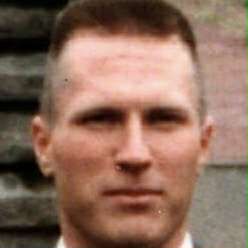
b: 1970
Mattias Flink
Summary
Name:
Mattias FlinkYears Active:
1994Birth:
March 08, 1970Status:
ReleasedClass:
Mass MurdererVictims:
7Method:
ShootingNationality:
Sweden
b: 1970
Mattias Flink
Summary: Mass Murderer
Name:
Mattias FlinkStatus:
ReleasedVictims:
7Method:
ShootingNationality:
SwedenBirth:
March 08, 1970Years Active:
1994bio
Mattias Flink was born on 8 March 1970 in Falun, Sweden, and raised in the same town. His family background was rooted in firearms craftsmanship—both his father and grandfather worked as gunsmiths and operated their own shop. His mother was a housewife. At the age of seven, Flink joined the Swedish Scout Movement, showing early signs of discipline and structure. However, the stability of his childhood began to unravel when his parents divorced when he was nine years old. Although the divorce was described as peaceful and well-managed, Flink reportedly developed emotional trauma due to his mother's departure. This event is believed to have caused a deep psychological wound and has been linked to a developing sense of alienation, particularly towards women, according to later psychiatric assessments.
Flink attended a high school where he studied Electrical Mechanics. After graduation, he began his military service as a conscript with the Dalarna Regiment (I 13). Showing promise and commitment, he went on to pursue a military career and was officially employed as a second lieutenant in the Swedish Army by 1993. By his early 20s, Flink had integrated into military life and held a respected role within the regiment. However, beneath this surface of discipline and professionalism, Flink was dealing with mounting psychological distress.
In the months leading up to the murders, Flink exhibited signs of severe mental health deterioration. Friends and acquaintances noted troubling behavioral changes, including increased aggression, deep jealousy, paranoia, and sleep disturbances. These symptoms intensified throughout the spring of 1994. Reports also indicated his growing instability in social environments—such as being thrown out of a restaurant for harassing women. Despite these warning signs, no formal intervention was made, and Flink’s mental state continued to deteriorate in the weeks before his violent rampage.
murder story
On June 11, 1994, Second Lieutenant Mattias Flink shot and killed seven people in Falun, Sweden. He had consumed a significant amount of alcohol before he left home dressed in his military uniform. Flink took his Ak 5 assault rifle and 150 rounds of ammunition. He then went to a park where he randomly shot six members of the Women's Auxiliary Services. Shortly after, he shot two additional men—a cyclist and a security officer—at a nearby crossing. Six of the victims died at the scene, while one woman later died in the hospital. One person survived the assault.
Following the shootings, Flink climbed into a nearby crane to hide. After some time, he descended and began walking along an abandoned railway. He was discovered by two policemen, at which point he fired at them. The policemen returned fire, hitting Flink in the hip. He was apprehended at 03:25 and taken to a hospital in Falun.
During his trial, the prosecution made no attempt to dispute the details of the crimes. The defense argued about Flink's mental state at the time of the shootings. Experts claimed he was in a temporary psychotic state caused by alcohol. Ultimately, Flink was sentenced to life imprisonment. This case set a precedent in Sweden, allowing courts to sentence individuals for crimes committed during alcohol-induced psychosis.
Flink was initially placed in Norrköping prison but was later transferred to Beateberg prison. He received protected identity status due to the nature of his crimes and did not give interviews during his time in prison. Flink was described as calm and well-behaved. In 2008, he applied for parole, which required a psychiatric assessment of his danger to society. The families of the victims opposed his release.
In January 2008, Flink requested to limit his life sentence to 24 years, but the court rejected it. In 2010, his request was approved, and his sentence was set to 32 years. This was later adjusted to 36 years by a court of appeal, and finally, the Supreme Court adjusted it to 30 years, making him eligible for parole in 2014. Flink was released on June 11, 2014, the 20th anniversary of his crime.